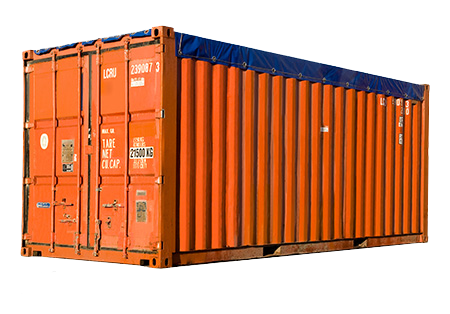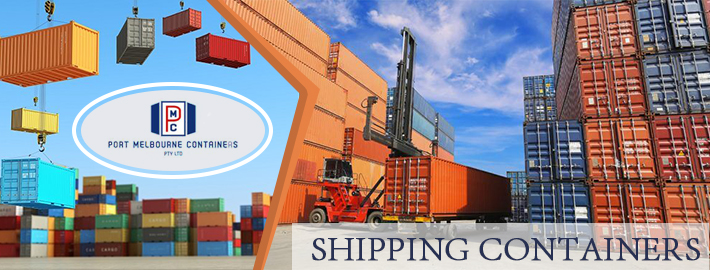Welcome readers to this ultimate guide on shipping container logistics. In today’s interconnected world, understanding the complexities of international shipping is crucial for businesses and individuals alike.
Whether you are a small business owner looking to expand your market or an individual moving overseas, having a comprehensive understanding of shipping container logistics can save you time, money, and headaches. In this guide, we will take you through the ins and outs of shipping container logistics, providing you with the knowledge and tools to navigate the world of international shipping with ease.
Understanding Shipping Containers
To truly grasp the world of shipping container logistics, it is important to start by understanding what shipping containers are and their role in global trade. Shipping containers Melbourne are standardised intermodal containers that are used to transport goods across various modes of transportation, including sea, air, road, and rail.
These containers come in different types and sizes to accommodate different cargo requirements. The most common types include dry containers, refrigerated containers, open-top containers, and flat-rack containers. Each container type has unique features and specifications that make them suitable for specific types of cargo.
Shipping Routes and Modes
Once you have a solid understanding of shipping containers Melbourne, it is time to explore the various modes of transportation used in container logistics. The most commonly used modes include sea, air, road, and rail.
Sea freight is the most cost-effective option for long-distance shipments, while air freight offers speed and reliability for time-sensitive goods. Road and rail freight are often used for domestic or regional shipments. Understanding the pros and cons of each mode will help you determine the best transportation option for your specific needs.
In addition to understanding the modes of transportation, it is important to be familiar with popular shipping routes and their significance in global trade. Major shipping routes include the Trans-Pacific route, Trans-Atlantic route, and Intra-Asia route.
Factors such as cost, time, and destination requirements play a crucial role in route selection. By understanding these factors, you can make informed decisions that optimize your shipping process.
Freight Forwarding and Customs Clearance
Freight forwarders play a crucial role in managing container shipments. These professionals act as intermediaries between shippers and carriers, ensuring that goods are transported smoothly from origin to destination.
They handle various tasks such as negotiating freight rates, booking cargo space, and preparing shipping documentation. When choosing a freight forwarder, it is important to consider their experience, reputation, and network of connections.
Customs clearance is another critical aspect of international shipping. It involves complying with import/export regulations and obtaining the necessary permits and licenses to move goods across borders. Customs clearance processes can be complex and time-consuming, but with the right knowledge and preparation, you can navigate them smoothly.
Understanding the steps involved and having accurate documentation is key to avoiding delays and potential penalties.

Container Packing and Loading
Proper packing and loading of goods into containers is essential to ensure the safety of your cargo during transit. It is important to follow best practices to prevent damage and maximize space utilization. Some key tips include using proper packaging materials, securing cargo with restraints, and distributing weight evenly within the container.
Additionally, optimizing container space efficiently can help reduce shipping costs. By utilizing techniques such as stacking and nesting, you can make the most out of the available space.
Documentation and Insurance
Documentation is a crucial aspect of international shipping. Essential documents include the bill of lading, commercial invoice, packing list, and export/import licenses.
These documents not only serve as proof of ownership and provide important details about the cargo but also play a vital role in facilitating customs clearance processes. Accurate completion of documentation is crucial to avoid delays and complications at ports or customs checkpoints.
Cargo insurance is another important consideration in shipping container logistics. While carriers have liability for lost or damaged cargo, their coverage may be limited.
Cargo insurance provides an additional layer of protection by mitigating the financial risks associated with potential loss or damage during transit. It is important to understand the different types of insurance coverage available and evaluate your specific needs to determine the appropriate level of coverage.
Tracking and Monitoring Shipments
Advancements in technology have revolutionized the tracking and monitoring of container shipments. Today, customers can track their shipments throughout the journey using online platforms or mobile applications.
Real-time monitoring offers numerous benefits, including improved supply chain visibility, enhanced security, and the ability to proactively address any issues that may arise during transit. However, it is important to be aware of potential challenges such as technical glitches or connectivity issues that may affect tracking accuracy.
Customs Duties and Import/Export Regulations
Understanding customs duties, tariffs, and taxes associated with international shipping is crucial for businesses and individuals importing or exporting goods.
Customs duties are levied by governments on imported goods and can significantly impact the cost of shipments. It is important to be aware of the applicable duty rates and any exemptions or preferential treatment that may be available under trade agreements.
Additionally, import/export regulations vary from country to country and can be complex. Compliance with these regulations is necessary to avoid penalties and ensure smooth customs clearance.
Shipping container logistics is a complex field that requires a comprehensive understanding of various factors such as shipping containers Melbourne, transportation modes, customs clearance procedures, documentation requirements, tracking technologies, and import/export regulations.
With the knowledge gained from this ultimate guide, readers will be better equipped to navigate the complexities of shipping container logistics. It is important to note that this blog post is meant for informational purposes only, and readers are advised to consult professionals or relevant authorities for specific guidance related to their unique shipping needs.
By applying the insights and tips provided in this guide, businesses and individuals can streamline their shipping processes, save costs, and ensure the successful delivery of goods across borders.



